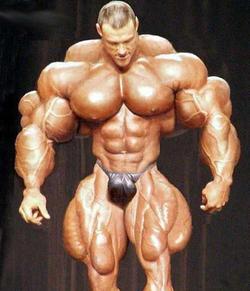First, don't think you will have it all figured out in 2 weeks time! Experts agree that you are better off making manageable changes to your diet and workout routine. Some of your eating and workout (or no workouts) habits have been developed over a lifetime.
For example, severely limiting sugars from your diet would be a great start. Drink water instead of sodas and sugary drinks. Just this one change will slash tons of calories every day. And, you will be on your way to burning dangerous belly fat.
Don't cut too many calories from your diet. Many of you have wrecked your metabolisms by eating too few calories during the day. If you have been eating 1000 calories a day for months and months, your body has shifted into survival mode and is storing body fat.
For instance, my basal metabolic rate (how many calories my body would burn if I did nothing all day) is about 2000 calories. If I eat 2000 calories and burn 500 calories through exercise and daily activity, I will still lose weight and burn fat (500 calorie deficit).
If I starve myself and eat 1200 calories (1300 calorie deficit) day after day, my body will rebel and store body fat. A 1300 calorie deficit is too large (severe calorie restriction).
You will find it easier to cut more calories by eating healthy and eating foods with high water content. You will actually be eating more while eating fewer calories. And, you will feel fuller for a longer period (thereby eating less).
The basics of it is to eat as many foods with high water content/low calories as you can. Foods such as fresh fruits and vegetables are examples. These types of foods help you to feel fuller (satiety) while eating fewer calories. For instance, grapes with the same caloric amount as raisins will provide more satiety and theoretically help you eat less the rest of the day.
Energy density of food is a key component when trying to add volume to your diet. Energy density (ED) is defined as the amount of calories of a food divided by its weight in grams.
You would basically focus on foods rich in fiber with high water content (or low ED value). Fresh fruits (apples, etc.) and vegetables (such as tomatoes and broccoli) whole grain pastas, brown rice, whole grain breads and cereals, soups, salads and skinless white chicken/turkey are some examples. Lean meats provide protein which should be eaten with every meal. Protein helps you feel fuller for a longer period.
Other dryer foods could be added to your diet on a limited basis. Dryer foods would be starchy fruits and vegetables, pizza, salad dressings, crackers, etc.
The old rule still applies: A caloric surplus (consume more calories than you burn) will cause you to gain weight! A diet high in water content will cause you to consume fewer calories while providing all the nutrition you need. Eat your meals about every 3 hours to protect against binge eating and provide needed energy throughout the day.
Cut out these types of foods: sodas, sugary fruit juice drinks, candy, cookies, donuts, fried meats and fried foods, fast foods, ketchup, mayonnaise
Add these types of foods: whole grain breads, whole grain cereals, oatmeal, almonds, nuts, low-fat dairy products, low-fat yogurt, fruits, veggies, unsweetened tea, water, lean meats (baked, broiled or grilled), olive oil, cinnamon, mustard.
Cutting calories the healthy way combined with regular weight training and interval cardio training will help you reach your goals over time.
If you need to know how to lose weight the right way, get My Fitness Hut's 7-Day Weight Loss And Fat Loss e-Course! The e-Course is FREE!
"Exercise is not my life.....exercise makes my life better!"
Check out my other great blogs:
Her Fitness Hut Blog Her Fitness Hut is featured on EmpowHER, a great health issues website for women! Her Fitness Hut has also been named in the Top 50 Personal Training Blogs by Physical Therapy Assistant Schools!
Sports Fitness Hut Blog has been recognized by Stanford University Wellsphere as the #1 Sports Fitness Blog and NursingDegree.net as one of the Best 100 Health and Nutrition Blogs for Athletes! The blog has also been named as one of the "50 Best Sports Medicine Blogs by Masters In Healthcare! It is an honor to be recognized by those in the health and academic fields! Afterall, health is number one for everybody---including athletes!






 11:45
11:45
 kaniamazdar
kaniamazdar

















